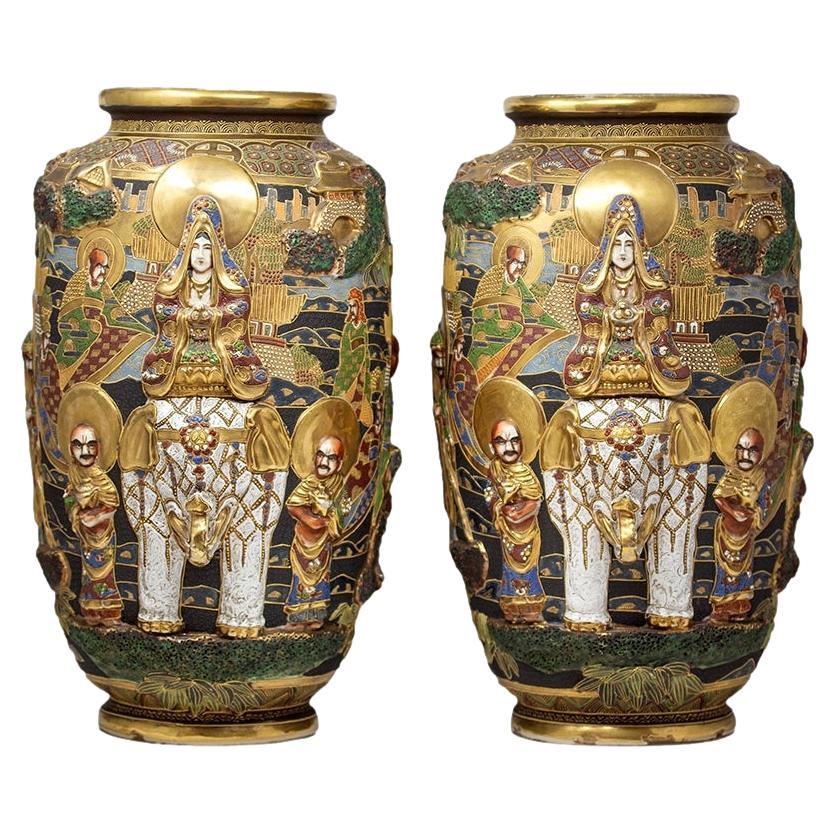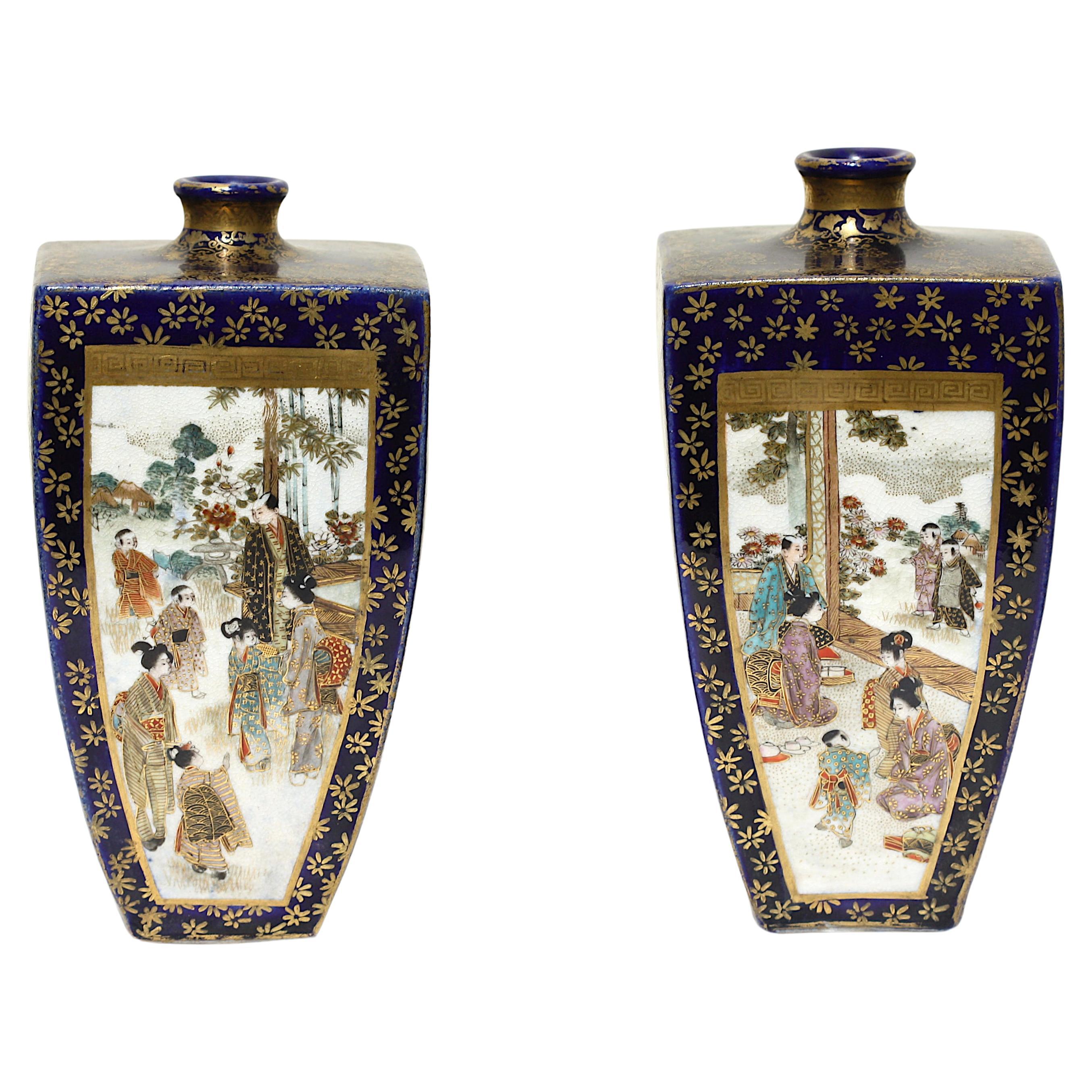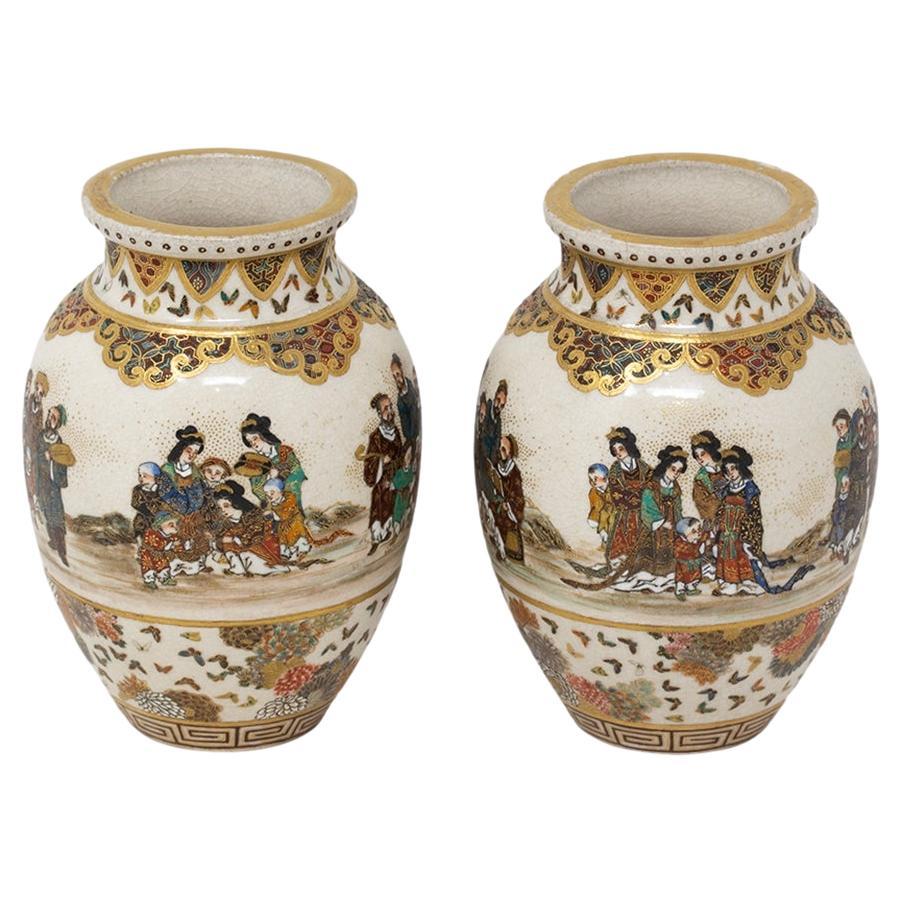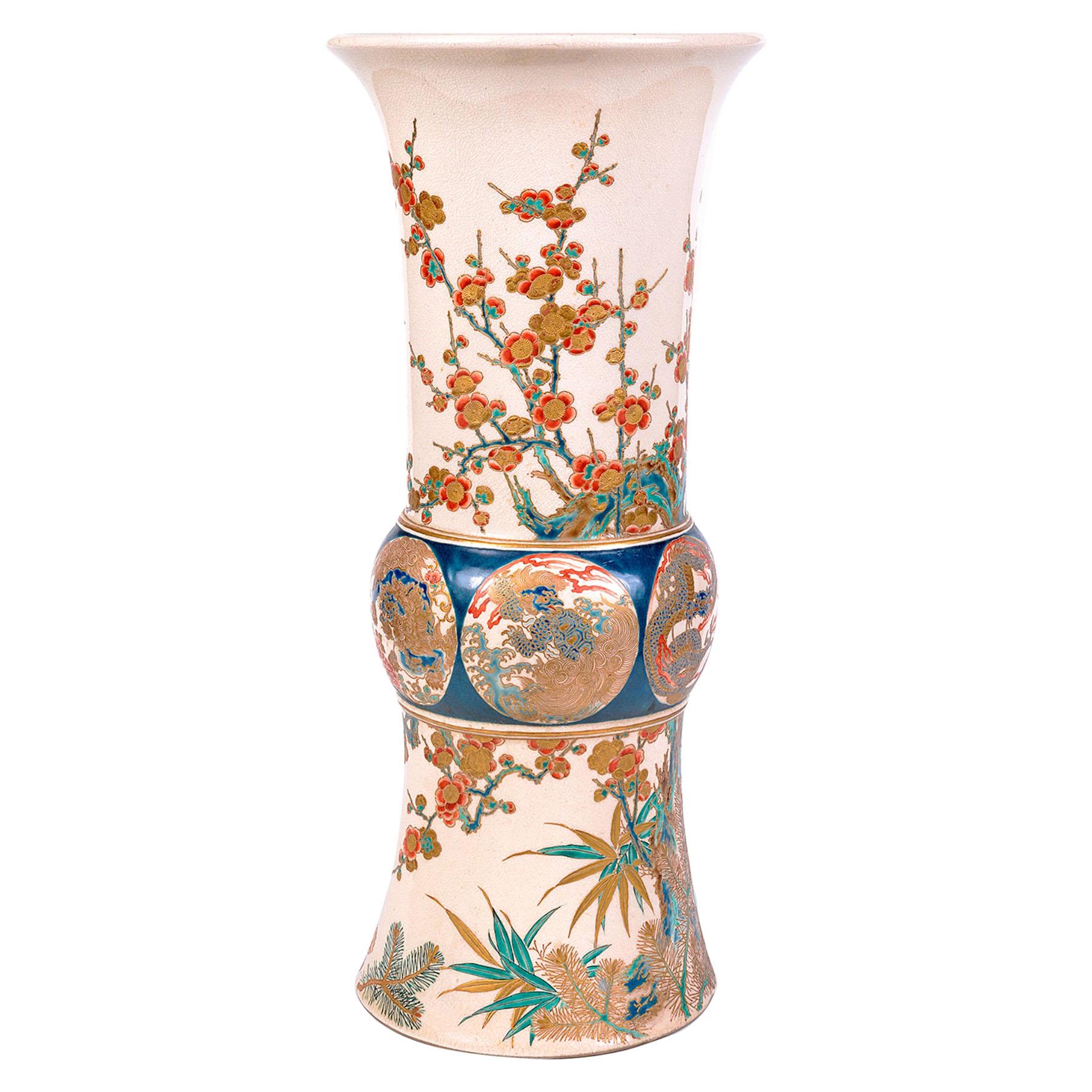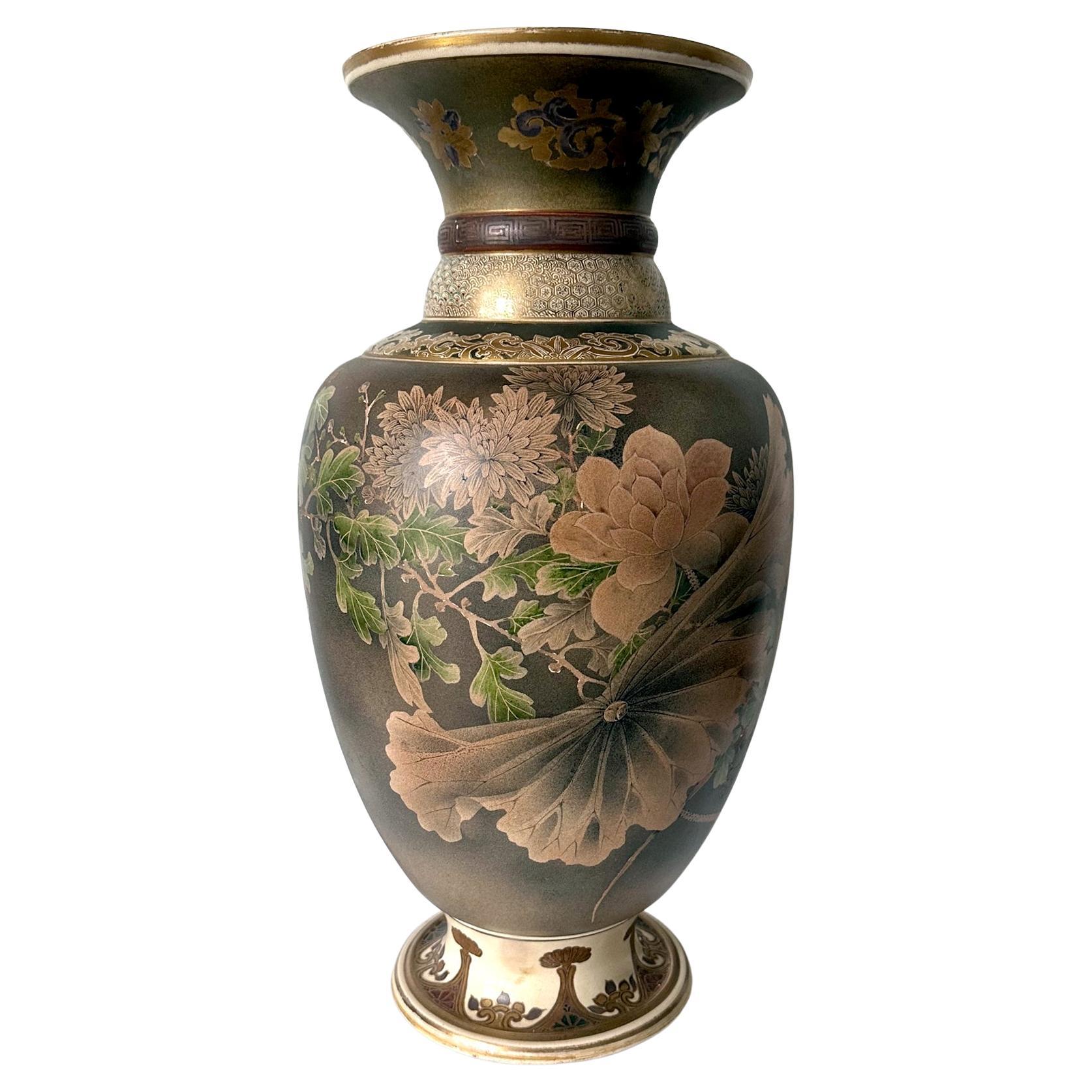Items Similar to Japanese Satsuma Vase in Ceramic and Polychrome Enamel, Meiji Period 1800
Want more images or videos?
Request additional images or videos from the seller
Japanese Satsuma Vase in Ceramic and Polychrome Enamel, Meiji Period 1800
About the Item
Japanese vase
in ceramic and polychrome enamel
attributable to the
hand of Kinkozan
ORIGIN
Japan
PERIOD
Meiji period 1800
AUTHOR
Referable to the
hand of Kinkozan
MATERIALS
Ceramic, polychrome glaze
DIMENSIONS
H 25 cm
Ø 16 cm
CONDITIONS
Perfect. Evaluate through the attached photos.
- Attributed to:Kinkozan (Author)
- Dimensions:Height: 9.85 in (25 cm)Diameter: 6.3 in (16 cm)
- Materials and Techniques:
- Place of Origin:
- Period:
- Date of Manufacture:19th Century
- Condition:
- Seller Location:Torino, IT
- Reference Number:1stDibs: LU6024234249712
About the Seller
5.0
Vetted Seller
These experienced sellers undergo a comprehensive evaluation by our team of in-house experts.
Established in 2007
1stDibs seller since 2021
31 sales on 1stDibs
Typical response time: <1 hour
- ShippingRetrieving quote...Ships From: Torino, Italy
- Return PolicyA return for this item may be initiated within 14 days of delivery.
More From This SellerView All
- LIMOGES vase made of biscuit ceramic and enamel, with bas-reliefs in classical styleBy LimogesLocated in Torino, ITLIMOGES vase ceramic biscuit and enamel, with bas-reliefs in a classic style. ORIGIN France PERIOD Second Twentieth Century MARK LIMOGES France MATERIALS Biscuit ceramics and gla...Category
Vintage 1960s French Vases
MaterialsCeramic
- Cachepot Vase in Ceramic Barbotine, France, 1920sLocated in Torino, ITCachepot vase, ceramic barbotine basket, decorated with flowers and leaves. France, 1920s. Origin: France Period: 1920s Template: Cachepot vase, ceramic basket with decorative f...Category
20th Century French Vases
MaterialsCeramic
- "Puzzle" Polychrome Blown Glass Vase, Design Ettore Sottsass for Venini, ItalyBy Venini, Ettore SottsassLocated in Torino, IT"Puzzle" polychrome blown glass vase, design Ettore Sottsass for Venini Origin Italy Period 2017 Author Ettore Sottsass (1917 - 2007) Brand Venini Model Puzzle ...Category
2010s Italian Vases
MaterialsGlass, Art Glass, Blown Glass, Murano Glass
- Archimede Seguso, Trio of Polychrome Blown Glass Vases, Murano, 40s / 50sBy Archimede SegusoLocated in Torino, ITTrio of polychrome blown glass vases signed Archimede SEGUSO Origin Murano Period 40s / 50s Designer Archimede SEGUSO (Murano, 1909 - 1999), Italian entrepreneur and m...Category
Vintage 1940s Italian Vases
MaterialsGlass, Art Glass, Blown Glass, Murano Glass
- Pair of glazed and hand-painted ceramic and bronze vases. Late 19th centuryLocated in Torino, ITPair of vases glazed ceramic and hand-painted, with bronze elements. Second Half of the Nineteenth Century PERIOD Second Half of the nineteenth century MATERIALS Glazed ceramic and...Category
Antique Late 19th Century Unknown Vases
MaterialsBronze
- Ceramic Vase, Attr. to Molaroni Manufacture. Pesaro, ItalyBy Molaroni PesaroLocated in Torino, ITVase in glazed and painted ceramic referable to the Molaroni manufacture. Pesaro, Italy Origin: Italy Brand: The workmanship and the quality, in particular of the painting, alm...Category
20th Century Italian Vases
MaterialsCeramic
You May Also Like
- Japanese Meiji Period Satsuma Floor VasesLocated in Newark, EnglandThe vases of large oval form potted from earthenware with pinched neck and base stood upon a splayed circular foot. The vases extensively decorated with a continuous scene with polychrome colours and raised enamels featuring a large central white elephant and various figures. The top and bottom bordered by arched gilt decoration and gilded rims. The bases signed by a three character mark in red 新井造 Arai Zo (made by Arai). The vases date to the Meiji period (1868-1912) and are large in size measuring 46cm High. Meiji Period is an era of Japanese history that spanned from 1868 to 1912. It was the first half of the Empire of Japan, when the Japanese people began to build a paradigm of a modern, industrialised nation state and emergent great power, influenced by Western countries and aesthetics. As a result of radically different ideas, the changes to Japan were profound and it affected the social structure, politics, economy, military, and foreign relations...Category
Antique Late 19th Century Japanese Meiji Vases
MaterialsCeramic, Earthenware
- A Pair Satsuma earthenware vases by Kinkozan, Meiji periodBy KinkozanLocated in West Palm Beach, FLA Pair Satsuma earthenware vases by Kinkozan, Meiji period of square section, decorated with birds and flowers alternating with figures, all reserved on a midnight-blue ground with floral designs, each signed Kinkozan zo...Category
20th Century Vases
MaterialsCeramic
- Japanese Meiji Period Satsuma Vase Pair GyokuzanLocated in Newark, EnglandPainted with Continuous Scenes From our Japanese collection, we are delighted to offer this Japanese Satsuma Vase Pair by Gyokuzan. The vases of squat bulbous form with pinched neck...Category
Antique Late 19th Century Japanese Meiji Vases
MaterialsCeramic, Pottery, Earthenware
- Meiji period Satsuma vase.By SatsumaLocated in Brighton, SussexA good quality 19th Century Japanese Satsuma vase, having imperial influences with a dark blue ground, blossom tree decoration to the flared neck, circul...Category
Antique Late 19th Century Japanese Vases
MaterialsPorcelain
- Large Japanese Satsuma Ceramic Vase KinkozanBy KinkozanLocated in Atlanta, GAA large Japanese ceramic vase from the end of Meiji period circa 1890-1910s by Kinkozan (1645-1927). One of the largest studio manufacturers of the export ceramics at the time based in Kyoto. In the typical style of satsuma made at the turn of 20th century, the vase is elaborately decorated with a rather unusual kinran-de (gold paint) and green enamel highlight on a mottled brown background. The painterly decoration depicts a large seasonal floral arrangement in a circular fashion. Besides the obviously superb craftsmanship, what sets this particular vase apart from many lower quality and mass-produced pieces is its tone-on-tone color pallet that is visually somber and the small and sensitive details that heralds the change of the seasons. When the viewer goes beyond the first casual glimpse of the blossom and foliage, one would notice that on the edges of certain leaves as well as along the stalks, there accumulates a very thin layer of the white dust that represents the frost. The flower in bloom are chrysanthemums. Despite of being splendid, they are the messengers of the autumn. The large lotus leaf was subtly rendered in a bended and slightly withered manner, just past its prime. Although the lotus is still in bloom, the prominent seed pod indicates it may be the last for the season. The sentimental capture of the change of the seasons is not unusual in Japanese art. This vase poetically represents such a subtle transition from summer to fall, perhaps depicting the very first frost. The neck of the vase is also slightly unusual with two rolled rings...Category
Early 20th Century Japanese Meiji Ceramics
MaterialsCeramic
- Imperial Japanese Satsuma two handle vase, Meiji period.Located in Brighton, SussexA fine quality Japanese Imperial Satsuma vase, having wonderful hand painted classical decoration of motifs, mythical Dragon handles to either side and an inset panel depicting bloss...Category
Antique Late 19th Century Japanese Vases
MaterialsPorcelain
Recently Viewed
View AllMore Ways To Browse
Daum Blackbirds
Duncan And Miller Crystal Glasses
Empoli Opalina
Epergne 6 Trumpet
Expensive Tiffany Lamps
Fan Vases Moser
Faure Pendant
Frederick H Rhead
Gabbiani On Sale
Ghalam Zani
Ginori Turquoise
Grapes Signed Vase By Daum
Greco Roman Floor Vase
Hagi Yaki
Hank Keramikk
Hermes Bathroom Set
Israeli Floor Vase
Jacques Fonck Et Jean Mateo
